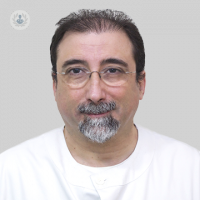Introduction to language problems
Written by:When in my clinical practice I have to explain to the parents of children with problems of spoken language the situation of their offspring, I note the high level of difficulty they exhibit in their assimilation, something that is more than justified, given that the treaties In this regard, they tend to be complicated and riddled with technicalities and confusing theories, but opposed.
The objective of these lines is to simplify the topic to the maximum so that it can serve as a "small conceptual guide to survival".
There are two types of language problems: delays and language disorders.
I find the classification of language problems that subdivide them into two broad groups very simple and illustrative: delays and language disorders. The first group includes children who have a linguistic level corresponding to an evolutionary age lower than the real one (children of 6 years who speak with normal language but for an age of 4 years, for example). The second group includes cases where detected deviations are not present in any previous stage of evolution. The members of the first group present, in general, a better therapeutic evolutionary prognosis.
From the perspective of pathology, many of my patients ask themselves a previous question: How do you establish what and how is a normal language? The truth is that there are, again, many theories written about it and with them comes the confusion. In my opinion one of the most clarifying approaches comes from the modular theory of language that considers, broadly speaking, this one constituted by three large modules, each with its own autonomous but interrelated rules.. Such are: the form, content and use. The first encompasses the rules that define the "container" in which each language presents its message, which in turn is subdivided into two: phonology (or rules of sound combination) and morphosyntax (or rules of word and phrases). So if a child says: "My cafa is gonita" (for "My house is beautiful") presents phonetic errors but not morphosyntactic. However, if it says "My house is beautiful" it does not make any phonetic errors and morphosyntactic errors.

The content is the "dictionary" that each child must have integrated in their baggage, depending on their age. And the use is the adequacy that must be had to each communicative environment to get an effective communication (for example, it is not the same linguistic register used in a dinner of friends than in a work with the boss). It is in the feeling of the undersigned to see how little effort is devoted to the rehabilitation of the use of language, compared to that dedicated to form and content, when the use is of decisive importance to achieve effective communication and efficient. Think, for example, of an adolescent with Down Syndrome who, despite committing some error in phonetics or morphosyntax, is able to adapt its use to the present communicative environment. This boy can be more efficient and empathetic than another adolescent with a better verbal technique but with inadequate staging or "politically incorrect or disagreeable" from a linguistic point of view.
For the diagnosis, regulated tests and the observation of spontaneous language are used.
For the diagnostic evaluation of all these aspects, regulated tests are used, but the observation of spontaneous language in open environments (the child expresses without directives) or closed (the explorer raises guidelines) is very important, as well as the exploration of hearing and listening to the child, since if they present problems the development of the language is compromised. The key lies in proposing an integral approach to all the processes described.


